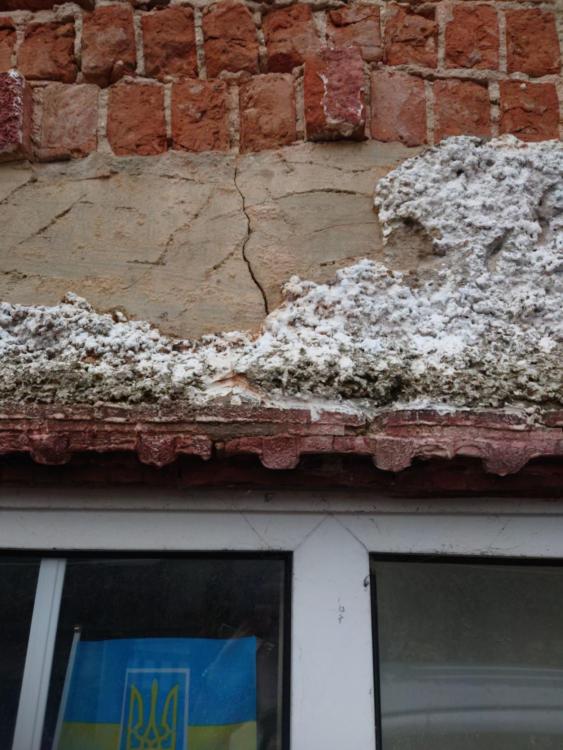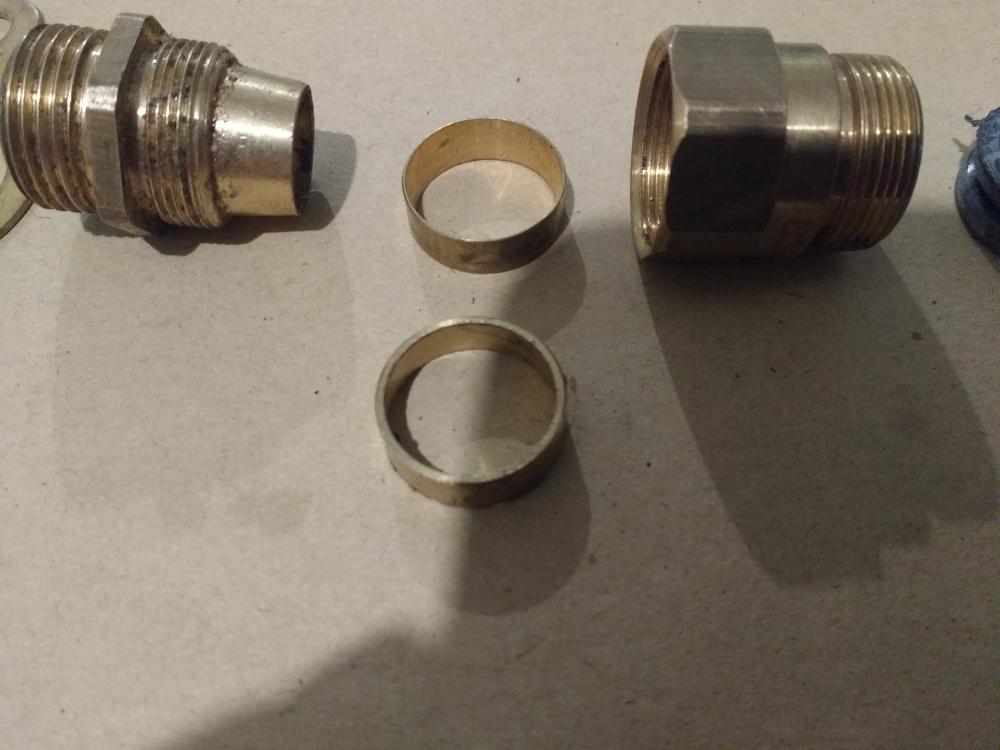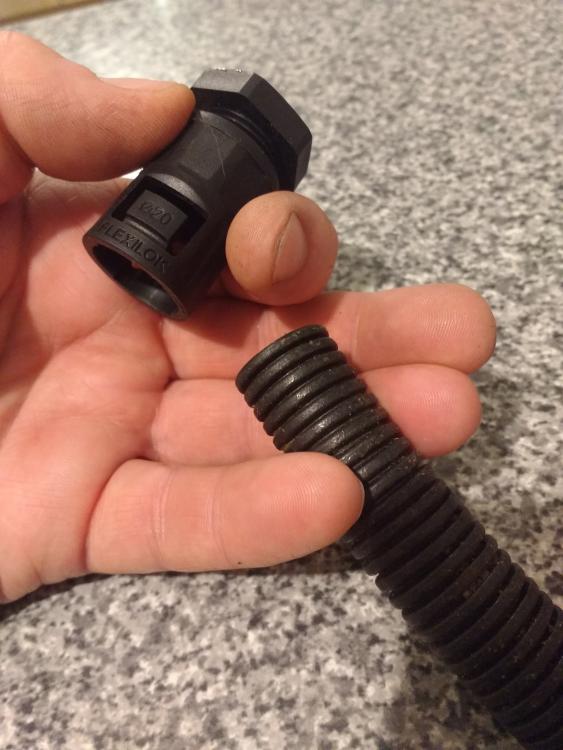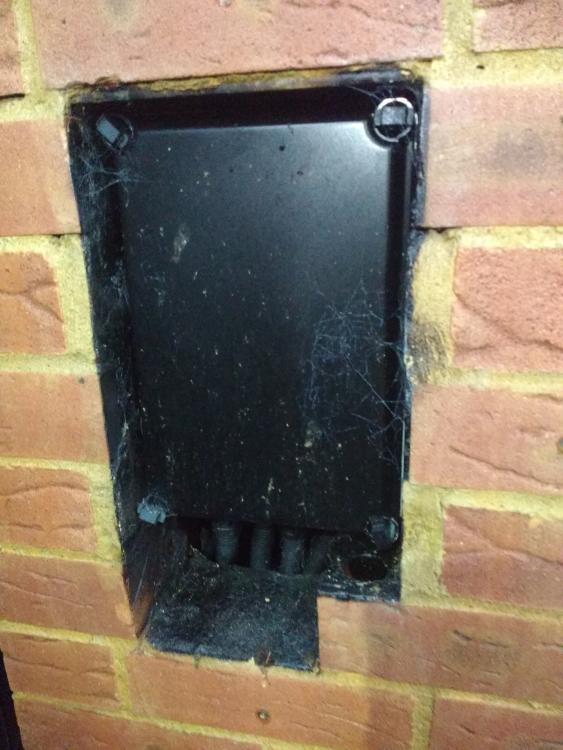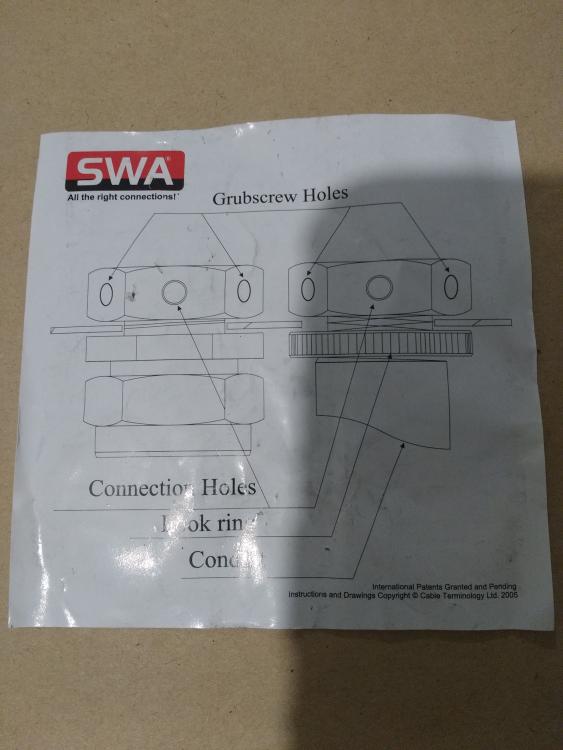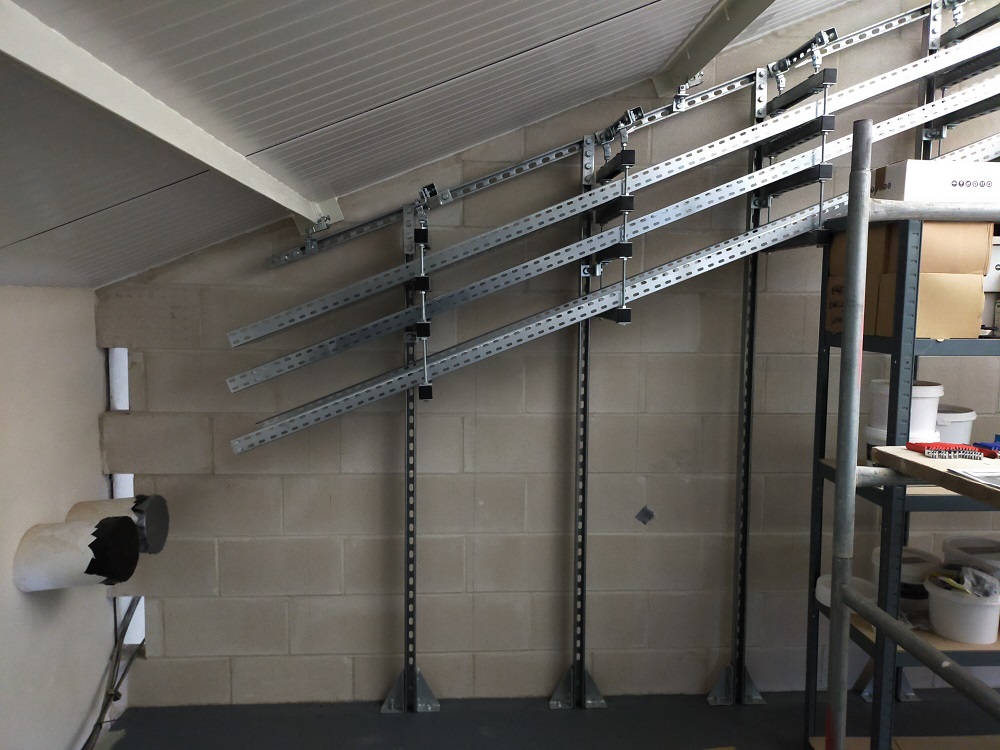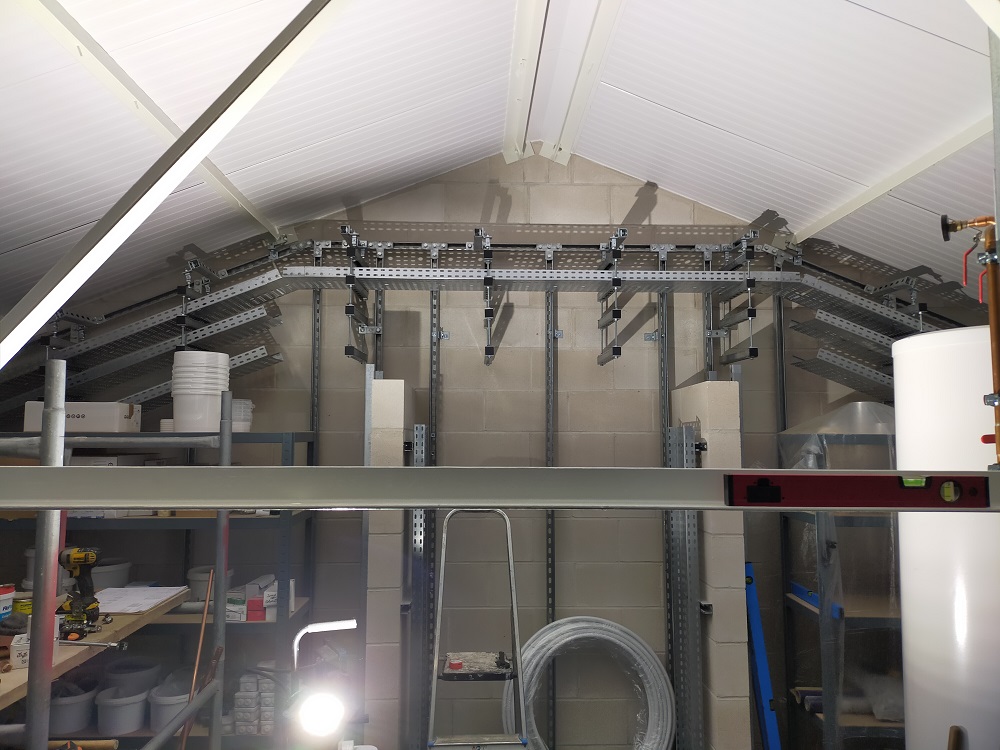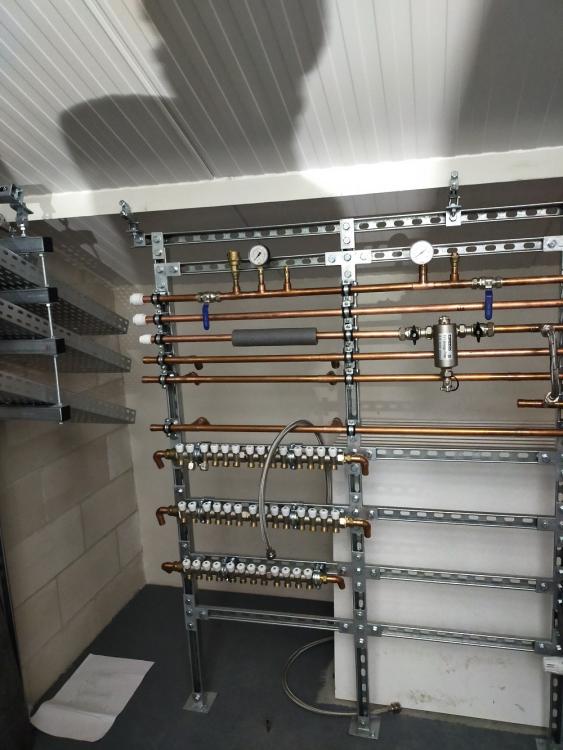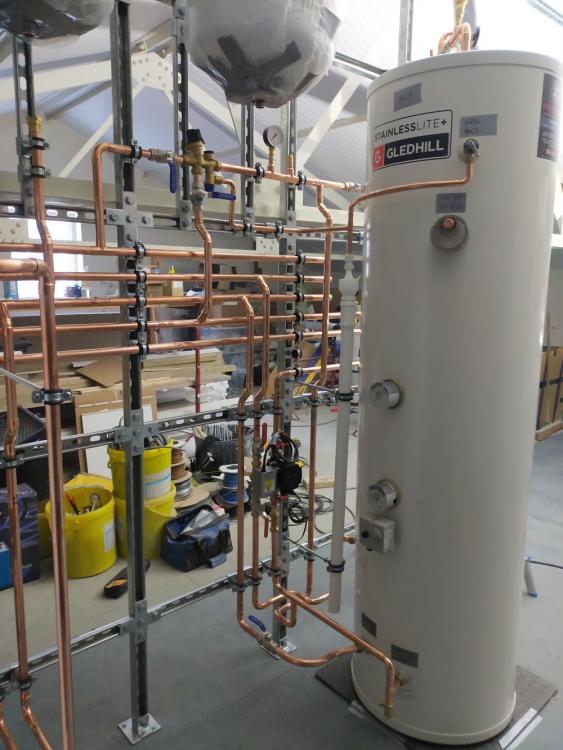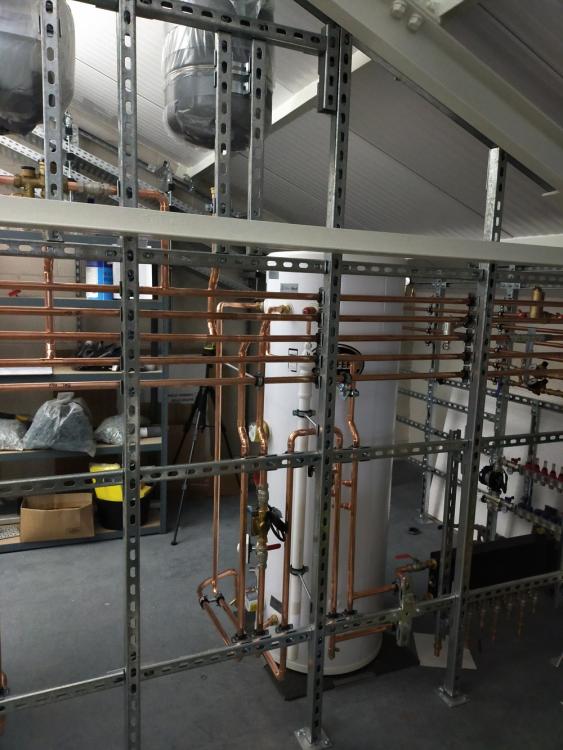Leaderboard
Popular Content
Showing content with the highest reputation on 01/05/23 in all areas
-
Just wanted to tell about my long and hard fought planning battle to finally get approval for anyone else in a similar situation who's losing hope. I bought a plot of land in a development area of a town with FPP for a traditional detached house back in 2020. I then worked with an architect to create a new highly contemporary design that better suited my needs and preferences and submitted it to the LPA, optimistically expecting a decision in 8 weeks time. There were no objections from the local town council nor any technical objections. The plot isn't in a conservation area, AONB or in any other special zone which might cause planning issues. Myself and my planning consultant expected this to be a quick and simple application. My planning consultant had an initial call with the case officer who said they didn't see any issues. All seemed good so far. Then a month later, after chasing the CO again, they came back and said that they had decided that there was no way they could give us approval for the house as it was too out of character for the area and that there was nothing we could do, revise or prove to change their mind. We argued that it wasn't out of character for the area, and that the same case officer had actually themselves approved several applications for contemporary houses nearby and written in their reports that there was no overriding architectural style in the area. They told us to argue it at appeal. At this point, I contacted the head of the LPA who seemed confused why the CO was refusing to allow us to even submit any additional evidence to show that it wasn't out of character. The CO reluctantly relented and said we now could submit additional evidence. I went all out on this - I had drone surveys mapping the whole area showing the house would be completely screened from the road, additional consultants came in to conduct character reviews of the local area, numerous additional architectural drawings etc. Upon informing the CO that all additional evidence would be submitted the following week, they replied and said they'd changed their mind about allowing additional evidence and were going to just reject the app. I contacted the head of the LPA about this to complain a few days later, who replied saying that the CO had actually just quit their job, we would be assigned a new CO and they'd be happy to review any additional evidence. A friendly local councillor passed on information about why we were having so much difficulty with this app - a local married councillor duo, who had a reputation for 'shouting the loudest' to get their own way, were doing everything they could to get the LPA to reject my app. At the town planning committee when my app was discussed, they had said they wanted to prevent all contemporary houses from being built and were apparently outraged that the committee sided with me and voted to raise no objection. This was their revenge. The new CO was far more amenable - he wanted to work with us to tweak the design to something he felt he could then approve. We spent two months going back and forth with designs and changes until he finally said that he was satisfied and would write a report giving us approval. This was about 7 months after the application was originally verified. I was obviously very pleased with this outcome and patiently awaited their report. A month passed before we followed up with them to see how they were getting on. Imagine our surprise when we were informed that this CO had also quit two days ago and we'd now get a third CO. The third CO looked at the original plans and the redesigns and said he much preferred the original plans to the redesigned version and would be happy to approve it with some minor tweaks, which we happily obliged. He then began writing his report recommending approval, and we waited and hoped this one wouldn't quit too. A month passed and we received confirmation his report was ready and just needed to be signed off by their line manager. A few weeks later and we find out there's a problem - the line manager refuses to sign off on it and tells him to re-write it as a refusal, stating 'overlooking' as the reason. This particular line manager is known to be friendly with married councillor duo. We obviously push back very hard on this as we have 3d drone surveys showing that overlooking is not possible, and that there is substantial distance between neighbouring properties which are well above guidelines for new builds anyway. I once again get the head of LPA involved and the line manager agrees to at least to do a site visit with the CO. At the site, the line manager begrudgingly admits defeat and allows the recommendation for approval. It's a little over a year since the app was verified. The journey's not over yet though, as it turned out that a ward councillor had called in the app to committee when it was first submitted but had gone unnoticed due to the multiple CO changes. I felt reasonably confident going into the committee though - we had an officers recommendation for approval, there was no 5 year housing supply in the area so development was favoured, and I wrote a very strong speech putting forward my case. At the committee I gave my speech and then listened the councillors debate. To my horror, this was when I found out that councillors don't actually bother to review planning documents for applications they're voting on - multiple councillors said they couldn't support it because they didn't know what materials would be used (despite all materials been listed numerous times in the docs) and one even saying they couldn't support it based on architectural drawings as they wanted illustrations (but there were multiple CGIs submitted in the docs). In the end, 4 councillors voted to refuse the app (2 were the married couple duo who said nothing during the debate and the other said they 'didn't like it' as their reason) but that was enough to overturn the CO recommendation as so many others abstained. Not willing to give up after how much work had already gone into this, I had my planning consultant start work on the appeal. We submitted a 50 page rebuttal of the committees one reason for refusal (contemporary design would be out of character). The LPA barely even tried to justify the committee decision, they submitted a 3 paragraph argument, seemingly acknowledging that they were fighting a lost cause. 6 months later and just in time for Christmas, we received the Inspectors report that the appeal was allowed. Almost exactly two years to the date after the app was first verified. The two year battle cost me ~£30k and building costs have gone up ~£300k during that time (the GDV has gone up by more than this but it is still painful). It was worth it in the end though to finally be able to build the house I want to build. Just wanted to tell my story for anyone else who's in a similar struggle at the moment and advise you to just keep pushing forward.2 points
-
@Temp Are you confusing the SECTION - A-A - this is at the door threshold?. The slab is not taking any weight from the walls or roof. Section A-A is intended to show the detail at the door way. - I have added the Typical section to the drawing to emphasize this. Or am I missing something? Thanks2 points
-
Indeed, the section of VAT Notice 708 linked above seems pretty clear that conversions are only zero-rated if done for a housing association. Fair enough. I would say that having several clients taking the same approach is not necessarily a useful guide unless one or more of them has had and survived an HMRC inspection. VAT is complex and not all accountants are on top of the details. I arrived in a past job to discover a VAT assessment of ~£50k for incorrectly claimed input tax plus interest & penalties. The accountants (who were otherwise pretty good) had signed off the treatment originally and had almost exhausted the appeal process on arguments they had put forward and lost. We had to appoint a specialist VAT lawyer/accountant firm who advised that the position the accountants had taken was hopeless both on statute and case law. Fortunately they were able to find an entirely separate basis to show we actually should have claimed the input tax and then charged an equivalent amount of output tax, which would have been fully reclaimable by our clients. So although the error was worse than thought, HMRC were not actually out of pocket overall. The Revenue's barrister eventually conceded that they were not guaranteed to win at Tribunal and advised them to rewind the appeal process a bit so they could cancel the case without losing face or establishing a precedent. It took about 18 months and still cost us five figures to defend, but a much smaller amount than revenue had wanted. We explored pursuing the original accountants for costs but quickly established that was a non-starter. Since then I have always taken advice about any detail of tax law/accounting with a large pinch of salt. Only mentioned stamp duty as you'd said earlier in the thread you were buying the finished property from the company. One other thought, it sounds like you're planning to live in one of the buildings - does your local authority have a Community Interest Levy and if so does your company structure get in the way of claiming a self-build exemption? We don't have CIL here but some of the figures I've seen on BuildHub over the years are pretty eye watering. Edit to add: of course I would also take VAT and tax advice from an internet forum with a pinch of salt 🤣 so if you're confident your accountant knows what they're doing then best of luck and as they say in Poland "not my circus, not my monkeys" 🙂2 points
-
A case officer ended up crying at a recent committee meeting after they overturned their approval and the head of the LPA has now quit as well. So it does seem that all is not sunshine and smiles in the planning department. I only had to deal with these councillors for one application and it was an absolute nightmare, I can't imagine having to deal with them on a daily basis as part of my full time job. I'd be out the door too.2 points
-
Happy New Year everybody, I wonder if I could please call on some advice and opinions from the many wise minds on here. So we have had a problem with penetrating damp. Solid walls, cement render. So I have hacked off some of the render (well, quite a lot of the render!) and that has solved the damp problem. Hurrah. Of course, one issue is that all the bricks are spalled... and I need to put back some kind of breathable render on the top... but my main question is about my lintel, I don't understand it. So I have an arch, with concrete infill underneath - I'd always presumed a steel lintel was in there as well, but I actually have no idea. The concern is that the lintel has cracked in the middle, I gather/presume from replacement of original frames with uPVC windows. But the uPVC windows have been there a long time and the wall hasn't fallen down. You can see the vertical cracking either side of the frame and there was historically on the inside evidence of a vertical crack underneath the middle of the window. We filled that in several years ago and it's not reappeared, so I am working on the assumption that it hasn't moved/cracked any further. The crack is at least 45mm deep having poked a bit of earth wire in it. Extends perhaps 3mm across at widest point. It's a gable end wall, but the 1st floor joists are sitting on this wall so it is taking some weight. Above the first floor window there's also looks evidence of an arch but the lintel is timber, and, from having looked at this from the inside of the house (when putting up woodfibre boards) in good condition. It's a 1920s house. Dwarf cavity walls with solid walls on top. Have people come across this sort of lintel arrangement before? And do I just ignore it or should I get some work done to strengthen it? I've had one company indicate they could reinforce with helical bars which sounds great but I've got no experience of this. Any easy way to work out if there is a steel in there without hacking back the concrete? (I've tried poking a tiny magnet in to see if it magically got picked up - no dice) I'll ask a question about render separately...1 point
-
My larger ones does that, 2 to 3°C difference between the centre and edges, when measured on the top of the front face.1 point
-
They are a bit bigger than my living room one, but about the same input. 3.4 [kW] x 7 [h] = 23.8 kWh If that stored energy is released evenly over the next 17 hours, that is a power output of 1.4 kW, which is not that high. As you have two of them, you will get double that, so 2.8 kW, which is about the same as a 3 kW fan heater would churn out. 36.5m2, so almost as large as my house (which is 48m2 over two floors). As you say, one heater is attached to an outside wall, not the best place for them. I moved mine to the party wall, but never actually bothered to measure the performance difference as I did it as soon as I moved in. They are easy enough to move. As your are in the frozen north, I suspect that they are undersized for a proper cold spell. I had a house in Aylesbury and during one exceptionally cold spell, the gas CH could not get the house warm and I had to get some electric heaters, as did my neighbours. One thing that can happen to SH is that they heat up to maximum before 7AM, then shit down and the output flap reopens (it closes when being charged up). It then starts to heat the rooms up but does not loose enough energy to have to recharge before the E7 window closes. This may mean you are loosing 2 hours of time shift. This can be caused by either a faulty input thermostat, the automatic output flap not responding to the charge period (it is a bimetalic strip that gets separately heated when they SH is charging up), or a stuck open output flap. You can sometimes hear the output flap slam shut (a good thing) but you don't hear them slam open. What I suspect is happening is that they are a bit on the small side for really cold weather, it is what usually happens. Do they work fine come April?1 point
-
First thing, when you go to bed, make sure the output control is set to it's lowest setting, fully anti clockwise. Then only turn the output control up later in the day when you sense they are starting to cool down. If the heat output is constant across the whole with of the output grill then it is likely all elements are okay. If it is cooler in the middle or at one end, one of the elements may have failed. They are easy to replace but you need to let the core cool down before you can dismantle it and take the front row of bricks out to get at the elements. I have had SH's in 2 previous houses, both poorly insulated and they were pretty rubbish because a poorly insulated house needs heat all the time you are using it, and if it runs out of heat the rooms quickly go cold. If the house has enough insulation to stay work for a few hours when the heat runs out they would probably work a lot better. All the sides of the heater are insulated. Most of the heat output is by convection by allowing cold air into the bottom into the hollow middle of the core (where the elements are) and out of the top of the core exiting through the grill. The output control opens a flap to allow easier convection as the core cools down. Some have a crude thermostat in the form of a bi metalic strip that is supposed to automatically open the output flat as the core cools down. One side effect of most of the heat exiting at the top of the heater, is my 1930's house with no floor insulation always had a pool of cold air at floor level that the SH just could not warm up.1 point
-
There is enough knowledge and skill on the is site to build a very good house. Just needs organising.1 point
-
1 point
-
You don't need a buffer to defrost, as long as the open capacity in the heating system is acceptable. Yes soft starts of inverter put less strain on things, but that not the whole story. Short cycling just uses way more power that it needs to, doesn't matter if it a heat pump or a boiler. Short run time use loads of energy just heating up steel work, it stops, everything cools, starts, heat the metal work -cools, repeat. 10 stop starts is 10x heating up up stuff that not inside the house. 3 stop start 3x heating stuff outside the house. Long runs good, short runs bad. The worst case is lots of start, no heat put in the house to any useful degree.1 point
-
1 point
-
Kit houses aren’t cheap. When you say all in do you mean everything including all fees, professional costs, planning and warrant costs? Do you have budget quotes for services yet? They can be high. Our first leccy quote was £26500. I’d budgeted £5k. It ended up £1016 and I then got a £545 refund but required me doing everything myself other than run the cable from the pole to my kiosk. You want a 4 bed house so let’s say 200m2 which means £1350/m2. That’s maybe doable if you do most of it yourself.1 point
-
In no particular order: Don't know your set up but afaic tell the earth's all need to be connected in that box. Then banjo / Pirhana nut to the earth point both ends of the feed cable via a little fly lead. Pirhana nuts are just more "bitey" than traditional gland nuts and brass banjos. You get better earth continuity, less chance of loosening over time. Traditional: Pirhana: They've a smooth or toothed side that'll bite into the box, in the case of a painted metal box the teeth will strip the paint to ensure contact with clean metal. Toothed side: Smooth side: This is an external SWA gland. From the left, the black rubber washer squashes onto the black, pvc outer sheath of the cable. The two rings I'm pointing to. There's only one per assembly but it must go on a certain way or you will struggle to get the armoured strands onto the cone to the left and do everything up: (Just realised I left the rubber boot out of the picture. PUT THE BOOT ON THE CABLE BEFORE YOU ASSEMBLE THE GLAND! 😂 Cut the pointy end off with a sharp Stanley a bit at a time until it's a nice tight, but still slides over the black sheath). As for plastic conduit glands. At the very least and still "wrong" if fitted on top you get glands like this. There's no proper sealing. Even if you glue the conduit in and use a rubber sealing washer it's naff on top. My neighbours was all done in this and the box was swimming: On the flexible conduit side I like these. They just push on and teeth grip the conduit. There are other types where the gland is hinged, folds around the conduit and snaps shut: Just realised why I didn't finish my gate box, didn't have a Pirhana nut! I have now and still need to finish it... I go out of my way to enter from the bottom: (I've got miles of old red sleeving still, I'm using it up!) I plastic primed and spray painted the box lid:1 point
-
1 point
-
and on admission, (s)he had to shower, change into a Hazmat suit, use Festool-level dust extraction ..... The point @ProDave makes (but because he's modest, he doesn't quite say it) he's an experienced electrician - he's made hundreds of build-related contacts over the years he's worked in the Highlands. Knows when each local trader breaks wind in the pub, who's disgraced themselves with a customer's wife, who's doing well, who's on his way out. And who never to touch.... Priceless information, priceless.1 point
-
https://www.tradepumps.com/grundfos-alpha3?tagrid=55270474 Change of £197 here1 point
-
1 point
-
Whereabouts in the country are you? I would start on the passiv-haus register then go from there. Very few small architectural practises can survive only on £1 million+ jobs.1 point
-
First, I'm really sorry you have had this awful experience. It's fairly a regular, not to say common story on this board. But that won't diminish the hurt you feel. I think I may know part of the answer to your question (highlighted in bold above). Networks. Your project 'feels' pretty large. And while your hesitant start did find some who wanted to engage, they withdrew - probably (in one case) because of the size of the project. Silence is a common weapon used by traders and customers who lack the emotional intelligence to say 'No ' politely. Your experience in that respect widespread here. We've all (I bet) suffered from the unanswered phone syndrome. At least one company tried to tell you 'No (more)' . But as you say: they found it difficult - because they hadn't thought it the whole thing through I expect. The formal process of Due Diligence - while basic to large projects - is cumbersome. Traders need a back-office to manage it: customers need to make the time to follow it. So corners are cut - on both sides. Please don't misunderstand this post: there's no Schadenfreude here. (Even though I'm German by birth). May I suggest you find out a lot more about potential suppliers in future? A lot more. Networking is hard work: from golf-course to pub or polite Sunday morning chit chat outside church. A project your size needs a long contacts list. Good luck Ian1 point
-
1 point
-
If you aren't sure, wire in a couple of tv points, ethernet points and plenty of power sockets in places you might want a tv. You can always cover the one over your fireplace with a painting. But in the past wehn I haven't been sure about something that relates to layout, I've found posting a couple of layouts here on the forum and getting people's different inputs has been really helpful.1 point
-
The Panasonic plasma TVs were awesome. Anyone that sees ours on can’t quite believe the picture quality from a 12 year old telly. It’s a bit power hungry though.1 point
-
1 point
-
1 point
-
Yup. Give the guys at CVC a shout and mention my username and the forum. Nick will look after you, great bunch of guys who provide for all of my clients builds. Not the cheapest, but my clients don't ask for cheap ( on the basis of; "you get what you pay for" etc etc ).1 point
-
SHC of water is 4.18 kJ/kg.K Fusion is 334 kJ/kg Air pressure will make a difference, but basically, if you have are trying to get the air dry, it takes a lot of energy if the temperature is above 0.01°C1 point
-
I'd get it specified by an SE. The weight of the ICF walls and roof is on the very edge of the slab supported by the insulation which is compressible. The reinforcement distributes the load over the wider area of the slab.1 point
-
@CalvinHobbesthere are better suppliers who are also cheaper so you’ve dodged a bullet there. BPC do a design / supply service and I think @Nickfromwales uses someone else too so there are plenty of decent options.1 point
-
Steel fibres expensive, plastic fibres cheap. Our local SE (we were obliged to use one) was unaware of the product. Worked nicely.1 point
-
£70 and it's a whole computer running linux. Mine does all my DALI lighting too. They aren't that easy to get hold of currently thats only slight issue, but I'm sure you'll find stock somewhere before you need it. https://thepihut.com/collections/raspberry-pi-kits-and-bundles/products/raspberry-pi-starter-kit1 point
-
Daisy-chain shielded CAT6/CAT7 between all locations you need 1-wire temperature sensors and make sure you put these sensors in slab, screed or under tiles as required. https://www.loxone.com/enen/kb/wiring-1-wire-devices/1 point
-
Conversions are zero rated BUT last I looked the procedure for getting there is different to new build. New build: Builder/company zero rates everything to the self builder. Any materials the self builder purchases himself are standard rated but reclaimable by the self builder using the reclaim scheme. Conversion: Builder/company 5% rates everything to the self builder. Any materials the self builder purchases himself are standard rated but reclaimable by the self builder using the reclaim scheme. Likewise the 5% charged by the builder/company can also be reclaimed. HOWEVER.. The self build VAT reclaim scheme is only available to people building or converting a house for themselves or a family member(?) to live in. It's not available for people doing a build for sale/profit. Some websites tell me the self build reclaim scheme is not available on a holiday let but is available on a second home ( https://www.cronertaxwise.com/community/vqotw-diy-claim-for-a-holiday-home/). I think it would be hard to argue the house next door to yours is your "second home" but why not. Properties built and rented out longer term (eg on an assured tennancy agreement) are not zero rated at all. If VAT has been reclaimed on one of these it may well have to be repaid. This has to do with the difference between zero rating and exempt. VAT on rental income: My understanding is that if a holiday let is owned by a VAT registered business that reclaims the VAT on construction then they will also have to charge VAT on the holiday rental income. A private individual renting out the same property may not have to charge VAT? You should also check the situation regarding the CIL exemption for self builders and apply for it correctly or risk loosing it. I am not an accountant. I do not accept any liability for this information! Check it out yourself.1 point
-
My understanding is different, I would've thought that this is reduced rate 5%1 point
-
Tmin needs to be expressed in seconds not minutes. Sorry I didn't make that clear in the original post, its kind of obvious if you have a physics background, but not otherwise.1 point
-
The way I understand it, it is not the voltage that is the issue, it is the isolation. 110V on site uses isolating transformers, there is no reason why it could not be a 230V isolating transformer. These have no physical connection between the primary and secondary windings. So if you touch either the nominal live, or neutral wires, they become grounded and at 0V (or very close to it), this zeros the power as power is VA. Just don't touch both at the same time.1 point
-
If I've understood their business model correctly, they're unlikely to go bust - all of their capital comes from shareholders, and the business model is essentially to sell the electricity they produce to their customers at close to cost price rather than market price. Unless market prices go below the cost of production (very unlikely for a wind farm!) they're unlikely to go bust. Returns might however be very poor. Plenty of large institutional investors doing exactly the same thing. I get the feeling Ripple was set up because someone wanted to buy shares in a wind turbine and couldn't do it easily, and decided there was a gap in the market to sell these shares. Given the rate of take up, that appears to be true. Energy is very cheap, and most forms of storage have very low energy density. It's a particular problem if you only recharge and use it once a year. Whatever you do a gasification boiler is going to add a lot of complexity. If it's just PV then you can just wire all the immersion heaters up with DPDT relays to replace the SPDT. That way once the first immersion reaches temperature and the relay fires, the current is connected to the next immersion, and so on. Exactly how long would it take for a plumber to get to where you live, 6 weeks? This is supplementing the existing heating system I assume, in which case reliability really isn't that big a deal. Valves, etc. are reliable enough that they're rarely the cause of problems in domestic systems. Problem is to get a decent amount of energy stored you really need a heavy weight a long distance, and there aren't many options for that. Gravitricity seem to be the least hopeless of the lot - using disused mine shafts so the hole is already there - but they don't seem to be able to make it work economically either and are pivoting to hydrogen storage underground. No published data for the big systems, retail price for the smaller ones is in the region of £250/kWh so you'd be looking at £25k or so for a 100kWh system. Capable of storing about £10 worth of heat! 2035 is the current date for fitting no new gas boilers - realistically that means that there will still be gas boilers on the grid in 2050. The transition time is getting up there with the life of a power station, so the capacity really isn't an issue - and I can't find any Labour policies to change this. Electric cars overwhelmingly charge at night when demand is maybe half that during the day anyway. Little or no new capacity needed there. Hard to say when you don't show any calculation! Surface area of the insulation box is ~6m2. To make the maths easier, flatten it out and act as if everything is one-dimensional. To steal from Wiki, In this case, q has units of W/m2 - it's a heat flux not a power. k is 0.035 W/m.K T2-T1 is 500 K L is 0.4m This means q is 43.75 W/m2 and so total losses are 262W (multiply by 6). This means losses are 6.3 kWh/day at full temperature. Sand weighs about 1600 kg/m3 and specific heat capacity is 290 J/kg.K. This means that the heat capacity of 1m3 of sand is 464 kJ/K. 1 kWh is 3600 kJ, so each m3 of sand holds 0.13 kWh/K. This means the temperature in the store would initially drop by 50°C/day - obviously the rate of decay will slow down quickly as the temperature drops, and you really need to solve the integral to plot the behaviour with time (repeating this calculation in excel with time steps is fine). Conclusion: a 1m3 cube of sand is hopelessly small for this application, and 400mm of mineral wool is grossly insufficient as insulation at these temperatures.1 point
-
Airtightness was plastic vapour barrier on face of studs, tapped & sealed to the slab / ceiling. I tapped and sealed the PIR board as well. Ventilation was compromised by cost and Building control. - for the shower we just went for a standard extract fan and BC are still un decided if we need a big extractor for the Kitchenette. I've sent them the details of the Air to Air heating hoping that they will accept the de humidifying function. But obviously this is not extracting. Over spent on everything, opting for the Air to Air heating will allow for affordable year round use, paying for heat recovery ventilation fans was a bridge too far...1 point
-
We are quite luck in the sense that we have an upstairs plant room that is about 53m2 (9.5mx5.6m). It was designed to be right in the centre of the house, so wiring, plumbing and MVHR runs are radial in nature, hopefully keeping the length of runs minimised. The area was completely clear so I’ve created some skeletal walls from unistrut, with traywork to carry the wiring, plumbing and ventilation. This saved drilling holes in the plastered walls, which is my airtight barrier and the architectural brickwork. Plus if you have to move anything, you aren’t left with an unsightly hole. I’ve also started to create some partition walls (out of unistrut). It also means you have access to both side to run cables etc. I’ve only got the plumbing in so far, but it seems to be working out quite well (see pics). I don’t see why it wouldn’t work out in a smaller area.1 point
-
F*** it, let 'em burst. Might convince SWMBO we need to start doing things round here my way rather than her mental attempts at papering over the cracks. She won't buy into my ideas primarily as it's my idea. Menopausal madness.1 point
-
Ours had no input in the materials or build Protec Inspection The roof from the ground Foundations from his car Didnt have time to look round on the final inspection ?1 point
-
Thanks for the recommendations. I will chase it up. Just had a scam phone call re insulation wanted ad I put on gumtree. Bloody hell he claimed to be Neil Johnson and was offering 42 sheets of 150mm kingspan for £165!! Yeah I know, if it's too good to be true it is. Anyway the bugger is still calling me. He sent me an invoice from his company - I called them and they knew nothing about him of course. They have passed it to the police.0 points
-
0 points
-
Is that a typo or do you mean 25mm, where is the structural bit. If you put 25mm on top of insulation, then the first fat kid to fall over on it will see it cracking.0 points




